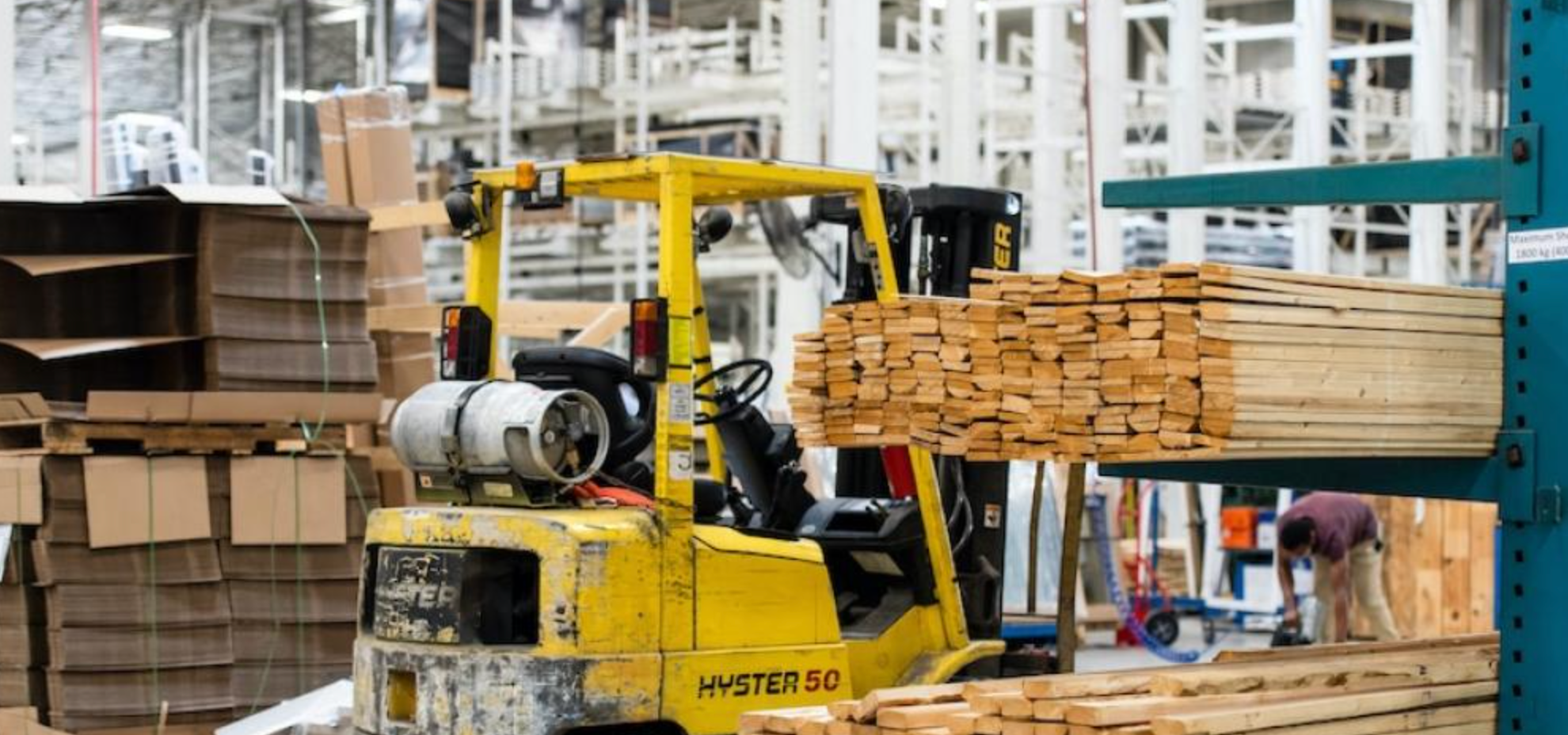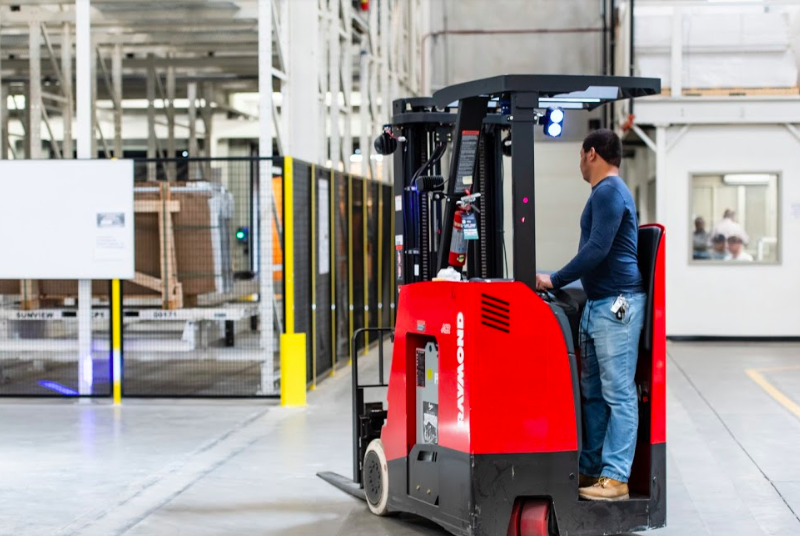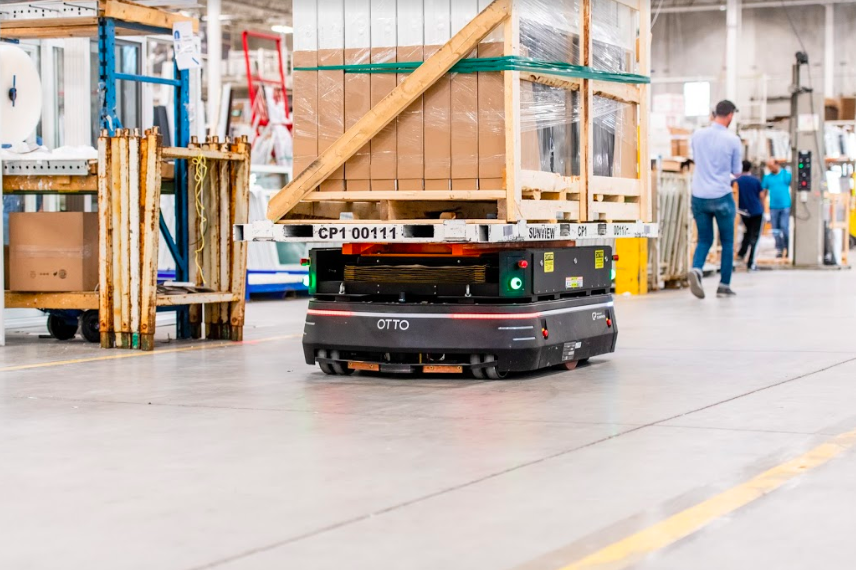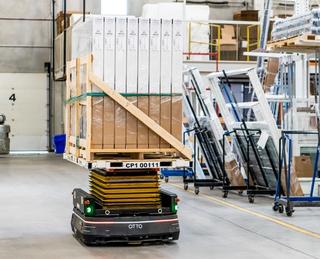Blog
The cost of doing nothing is dangerous: Why Sunview Patio Doors changed from manual material movement

With 40 years of experience, Sunview Patio Doors (Sunview) is a leader in their industry. Sunview has been successful at meeting customers’ increased demands for faster and better service, while providing an option for product customization. As the industry evolves and customers’ increasing demands change, Sunview came to understand that their traditional method of material handling — pump trucks and tow-motors (forklifts) — were unsafe, inflexible, and inefficient.
Here are the top 3 reasons Sunview chose to move from manual to autonomous material handling:
1. To improve safety of workers
Sunview’s previous method of manual material movement, tow-motors (forklifts), can be extremely dangerous because workers can become complacent with the repetitive nature of the job.
Each year, nearly 20,000 workers are seriously injured in forklift-related incidents. Additionally, the OCEA and Industrial Truck Association reported that there is a 90% chance of a serious accident occurring during the 9-year average lifespan of a forklift.
Strenuous manual material movement could impact workers’ health; manual lifting and handling of materials is one of the top five ways people working in warehouses get injured. In 2017 alone, there were 12,750 cases of warehouse workers taking days away from work due to injury. The safety risks of manual material movement meant adding more tow-motors to Sunview’s operations would not be an option.
Sunview required a solution that could work alongside employees without being a threat to their safety; autonomous material handling (in this case, AMRs) was the best choice for this manufacturer.
It’s the first type of material handling equipment that has a 100% safety rating, we haven’t had a single incident and it’s been over a year.
Kurt Oberparleiter
Vice President of Operations, Sunview Patio Doors

Sunview's previous method of manual material movement was unsafe and needed to be replaced by automation.
2. To improve flexibility and meet customization demands
As it becomes easier and less expensive to travel globally, customers’ expectations shift. North American homeowners travel to places like Europe and come back expecting similar design options at home.
As a result of globalization, over 80% of companies consider customer demands for increasing customization to be challenging. This drives Sunview’s need for flexibility in order to remain competitive in the market.
“Every single option that a customer selected when designing their product had to be accounted for in the manufacturing process, which was difficult to manage with manual material movement,” says Kurt. Sunview couldn’t afford to have a person on the line explaining every nuance in every product a customer selects.
We required the flexibility of AMRs because we have to be able to manufacture something different each day, without adjusting work cells and costing us an arm and a leg.
Kurt Oberparleiter
VP of Operations
These challenges presented a difficulty in Sunview’s operations, and the leadership team knew a more flexible solution was needed. The flexibility of automation allowed Sunview to provide a greater variety of products without slowing down production or having to adjust their existing infrastructure.
There are now endless options to product design because patio doors are no longer a standard size, thickness, and material. Every single choice a customer makes when designing their product means a change to our manufacturing flow, which must be accounted for in the process layout. This makes it very complex to manage — sometimes conveyorized flow just doesn’t work.
Kurt Oberparleiter
VP of Operations

OTTO AMRs are able to move on-demand to accommodate all customization changes on the production floor.
3. To improve efficiency and remain competitive
Customers are also increasingly demanding faster and cheaper delivery. According to the 2019 MHI Industry Report, customer demands for lower delivery costs is the second highest industry challenge, with almost 90% of companies considering it challenging. Due to advancing worldwide technology, customers expect same-day delivery, with 87% of customers saying delivery time would influence their purchase decisions, and 44% saying faster delivery increases their trust with a brand.
Sunview manufactures 70-80,000 units annually and requires efficient operations to get the right materials to the right spot at the right time. Sunview also needed an affordable way to efficiently move materials around the factory floor, to ensure they can keep prices low to compete with the 7,600+ companies in the window and door manufacturing industry.
To improve efficiency, Sunview automated the process of delivering finished products from the end of the production line to the warehouse, then reloading and bringing the empty pallets back. Through automation, Sunview is able to efficiently move products from one station to another to meet changing demands for faster delivery and remain competitive in their industry.
OTTO delivers material to the right place, at the right time.
Kurt Oberparleiter
VP of Operations, Sunview
Learn more about the challenges Sunview solved and the benefits they experienced through automation in the whitepaper.







